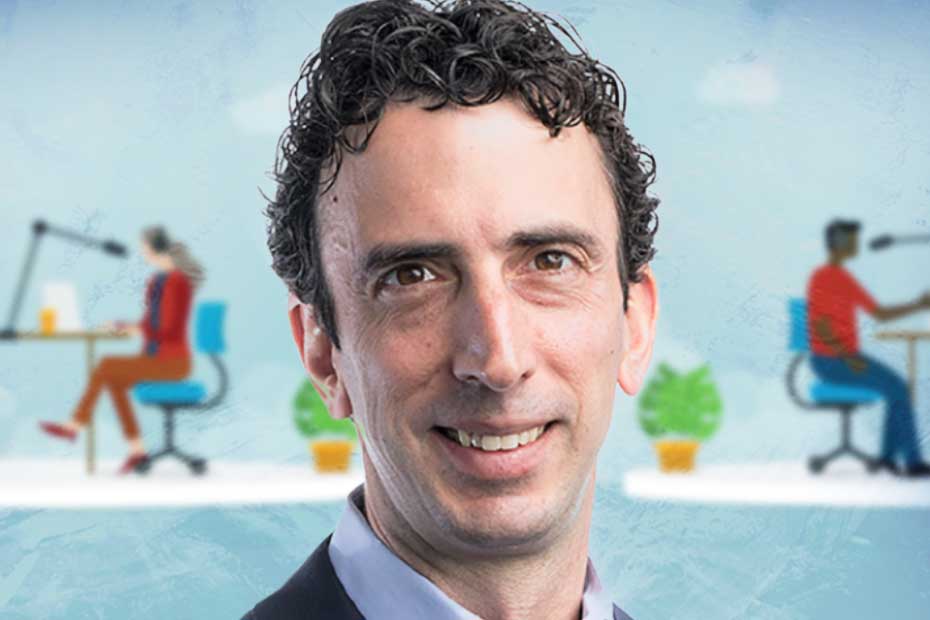Practically overnight, thousands of bureaucrats had to pivot to working from home and processing millions of relief applications. They’ve been pushing out billions of dollars in support for Canadians impacted by the COVID-19 crisis – almost entirely through digital channels, a first for the government.
Hillary Hartley, Ontario’s Chief Digital and Data Officer, and her distributed team were uniquely suited to this new environment. Their model made it easy for them to immediately start working from home when it became necessary without losing ground. After Alberta launched Canada’s first COVID-19 online self-assessment tool, Hartley’s team got the code and launched a version for Ontario within three days.
While the current focus for governments is on mission-critical crisis response, conversations are happening behind the scenes about how to seize this crisis to digitally revolutionize and better serve Canadians. Hartley and Alex Benay, the former CIO of Canada and partner at KPMG responsible for digital and government solutions, joined the RBC Disruptors podcast to discuss how the pandemic has made getting government up to the speed of digital more possible than ever.
Listen on Apple Podcasts, Google Podcasts, Spotify or Simplecast.
Benay says it’s interesting to see so many efforts pushing past all the “excuses” that used to exist for why governments couldn’t go digital-first. New programs such as the Canadian Emergency Response Benefit are going online faster, for instance, partly because the underlying rules are simpler.
“EI has tens of thousands of rules, CERB has a handful,” he said, “You’re seeing governments – both from a programmatic perspective and a technological perspective – realize that digital first is the way to go now.”
That is, if we can overcome outdated operating models.
Benay said the government’s conception of the Internet hasn’t evolved from processes created roughly 20 years ago. Bureaucrats are focused on the people who need to implement services, rather than data that could be beneficial. And information collected is protected behind firewalls and silo-ed across departments.
The latter is partly the product of privacy restrictions. In Ontario, for instance, data collected for a government program is allowed to be used only for that program. Even within the same ministry, different teams have to write up mutual agreements to be able to share data. Hartley said Ontario might have gone “a little bit too far in thinking about privacy” and not enough on interoperability, or how information could be exchanged.
“Attitudes are shifting,” she said. “It’s a moment where we really need to ask ourselves and ask the public how we should proceed.”
It comes down to two core pillars.
One is ensuring policies and regulations adapt quickly to enable proper sharing of information.
The other is having the right digital infrastructure to support a new model of service delivery. At the heart of the two is balancing a digital first mindset with appropriate privacy protections.
Perhaps there’s no better example of a digital-first government than Estonia. Both Hartley and Benay point to two specific innovations that paint a picture of what a future Canadian digital infrastructure could strive for.
The first is Estonia’s X-Road or as Benay describes it, “their railroad of the Industrial Age, but for the digital age.” It’s a decentralized server that allows thousands of businesses, governments and people to connect and exchange information. The other is a secure digital identity issued to every Estonian, which might arguably provide better privacy protections than what’s available in Canada today.
So how might Canada build the digital government of the future? A few takeaways:
- Distributed teams. They’re key to finding innovative solutions. To solve complex challenges, governments will need to work with people and networks in every corner of the world.
- Digital isn’t a tool, it’s a culture. Digital transformations require a major shift of mindset toward speed and user centricity. And it starts at the top with leaders who champion a digital-first model and encourage diversity of perspectives on their teams.
- Data is key. Governments need to focus on a new approach to data and privacy if they want to keep pace with the challenges and opportunities all around us. That doesn’t mean citizens will surrender control of our data, but there needs to be more flexibility, coupled with transparency, to solve a crisis like COVID.
- Obsess with users. Increasingly governments are learning to act less like monopolies and think more like start-ups that aren’t afraid to test and learn from their clients – it’s the most fundamental principle of a digital organization.
- Bold does not mean big. Use the success of the CERB roll-out, with its simpler business rules, as an example. Governments no longer need size to deliver results at scale. They can fund smaller things; focus on the half-dozen things that can make an impact and ensure the system doesn’t squash it.
The government will continue to play a huge role in propping up Canada’s economy throughout this crisis and using digital channels to do so. But the momentum can’t slow once the urgency fades. As we move into the 2020s, governments are going to have to move faster and be smarter in taking on challenges. If they are able to use the COVID-19 crisis as a catalyst for adopting digital tools and platforms, we could see a future in which every citizen is digitally enabled to receive the services they need as soon as they need them.
More from the Innovation:
This article is intended as general information only and is not to be relied upon as constituting legal, financial or other professional advice. A professional advisor should be consulted regarding your specific situation. Information presented is believed to be factual and up-to-date but we do not guarantee its accuracy and it should not be regarded as a complete analysis of the subjects discussed. All expressions of opinion reflect the judgment of the authors as of the date of publication and are subject to change. No endorsement of any third parties or their advice, opinions, information, products or services is expressly given or implied by Royal Bank of Canada or any of its affiliates.






























